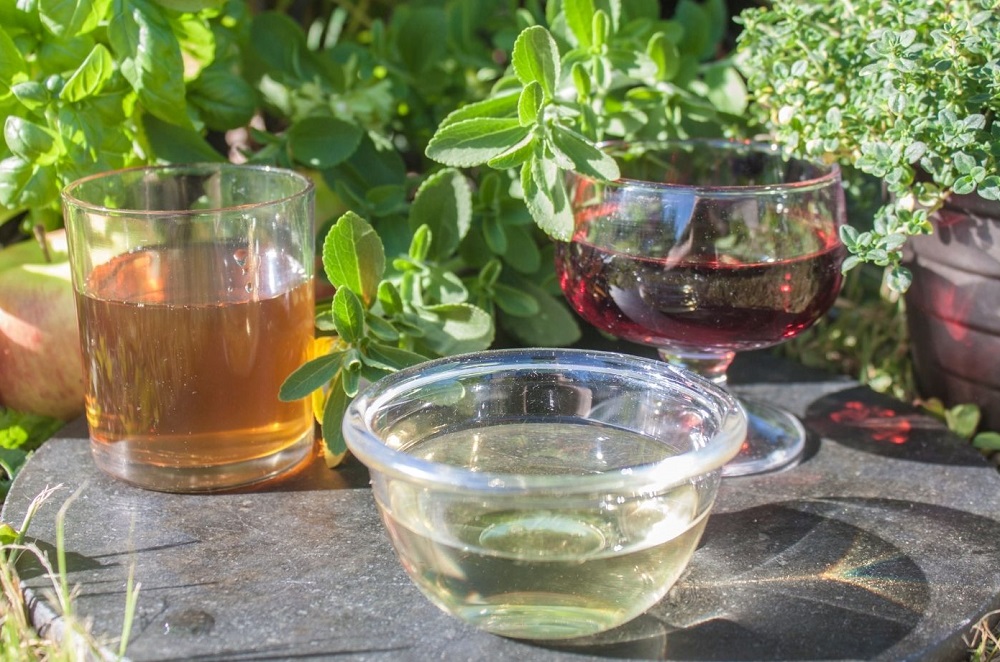White wine isn’t only for drinking. In fact, you might be surprised how many other ways there are to use it.
White wine is commonly used in cooking and flavoring dishes. It’s also fermented to create white wine vinegar.
White wine vinegar is delicious when used in savory dishes such as salads, stews and more. But, this versatile liquid has a lot more uses than you might think.
It’s a popular staple in most households around the world and is hailed for its health benefits, uses in food, cleaning, and gardening.
So, what exactly is white wine vinegar? This article will tell you everything you need to know about white wine vinegar, including how it’s made and what it can be used for. Keep reading to find out more.
What is white wine vinegar?
White wine vinegar is a type of vinegar that is made from white wine that is fermented and then distilled inside stainless steel vats called ‘acetators’, where the wine is also oxidized.
Finally, it is also mixed with water to dilute it, so it is less acidic and sugar is added to make the taste.
The result is a 5% acidity white wine vinegar that is clear to pale yellow in appearance and a mellow but fruity taste, a bit like a less powerful standard vinegar.
The process is very similar to how apple cider vinegar is made, only grapes are used rather than apples.
The white wine that goes into making white wine vinegar isn’t specific, though, instead a blend of different wines is used, sometimes referred to as ‘wine stock’.
Although, you can find higher quality white wine vinegar that is produced by using premium grapes and aged in barrels made of wood for as long as two years to develop a delicate, rich flavor.
What is white wine vinegar used for?
White wine vinegar is used around the globe, but is particularly popular in places like central Europe, Israel, and Cyprus in cooking and food preparation.
It is commonly used in cooking savory dishes such as stews and pasta sauces, as well as a dressing for salads and a brine for picking fruits and vegetables.
If you’re looking for a good way to include white wine vinegar in your salad dressing, try mixing it with police oil along with some salt and pepper to taste.
For best results, use the ratio of three parts olive oil to every one part white wine vinegar.
Alternatively, try adding it to your next stew or casserole. You only need to add a teaspoon or two to bring out the extra flavors.
Additionally, white wine vinegar is used to infuse other types of vinegar with fruits, herbs and other spices.
White wine vinegar may be most commonly known as an ingredient used in cooking but it also has a few less common benefits including uses in the home and yard.
It’s a great natural disinfectant and can be used in the place of chemical-containing household cleaning products. Plus, it’s more cost-effective and likely already in your pantry!
You can also use white wine vinegar as a natural herbicide in your yard to remove weeds without contributing to air and water pollution like with chemical pesticides.
What are the health benefits of white wine vinegar?

White wine vinegar has lots of uses inside the kitchen and out, but did you know it also carries certain health benefits? Who knew, right?
Well, white vinegar has actually been said to contribute to heart health, appetite control, regulate blood sugar, and has anti-tumor properties!
Let’s take a closer look.
Heart health
Research into the link between white wine vinegar and heart health is ongoing, but there are articles that suggest a connection between consuming white wine vinegar and reduced blood pressure and a better protected heart.
Appetite control & regulate blood sugar
Studies looking at white wine vinegar having appetite control and blood sugar regulatory properties show a reduction in the glycemic index of food when digested with white wine vinegar.
Possibly resulting in short-term appetite control in healthy patients, as well as helping to regulate blood sugar.
Anti-tumor properties
Another article has linked white wine vinegar with anti-tumor properties. White wine vinegar appeared to slow down the progression of certain tumors. The article also suggests white wine vinegar could also prevent new tumors from developing
What’s the difference between white wine vinegar and white vinegar?
Lots of people confuse the two or believe they are one and the same, but white wine vinegar and white vinegar are two very different liquids.
White vinegar is a colorless vinegar and is actually one of the most used types of vinegar in the U.S.
Its taste is more powerful than white wine vinegar, but its uses are similar, which is why people can get the two confused. Much like white wine vinegar, white vinegar is typically used in salads and pickling, but it’s also used in meat preservation and baking.
In fact, lots of people like to combine both white wine vinegar and white vinegar to create a delicious brine for picking things like watermelon rinds and red onion.
The main difference is that white wine vinegar is made from fermented white wine and white vinegar is made from distilled grains like corn, and water.
They also have different acidity levels. While white wine vinegar has an acidity level of 5%, white wine vinegar is a little more acidic at 5% to 8%. This, of course, affects the taste, too.
White wine vinegar is lightly acidic and mildly fruity, and white vinegar is more sour and harsh on the taste buds.
Final say
It’s clear, white wine vinegar is an incredibly versatile addition to any kitchen. If you don’t fancy adding it to your next recipe, try using it as a cleaning agent next time you run out of your regular products to save running out to the store. Or, use it in your garden to kill weeds!

